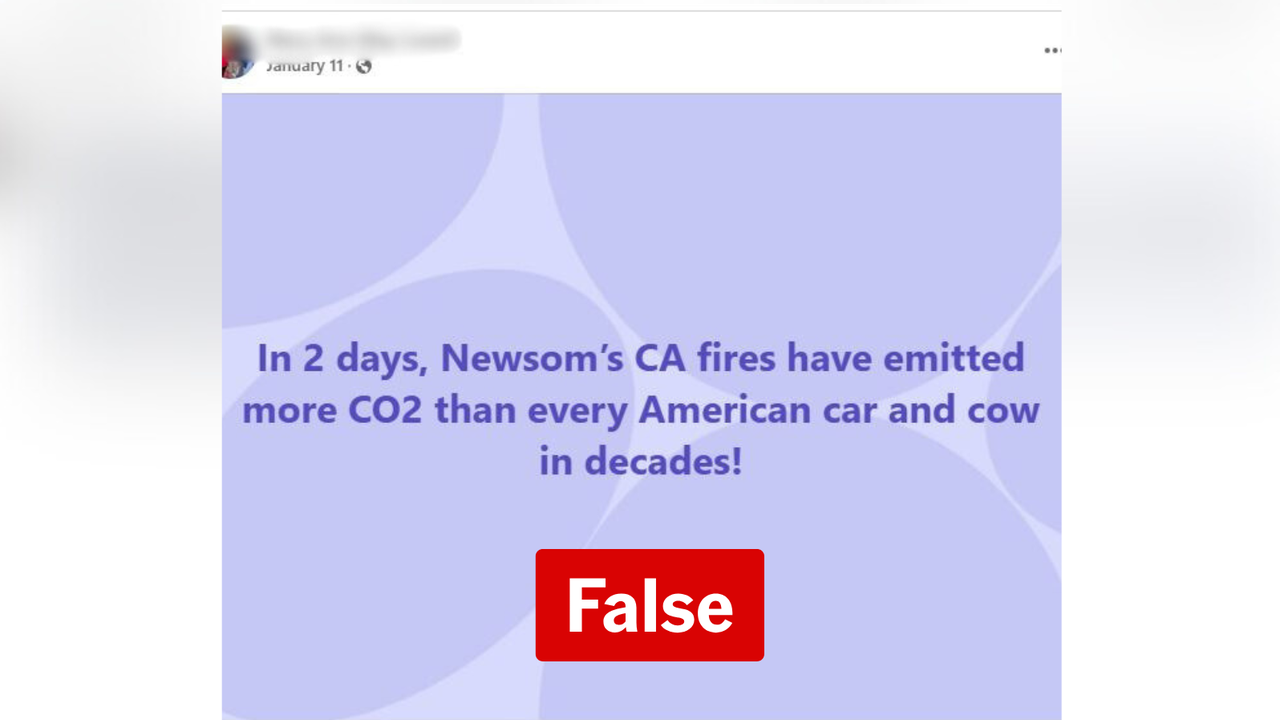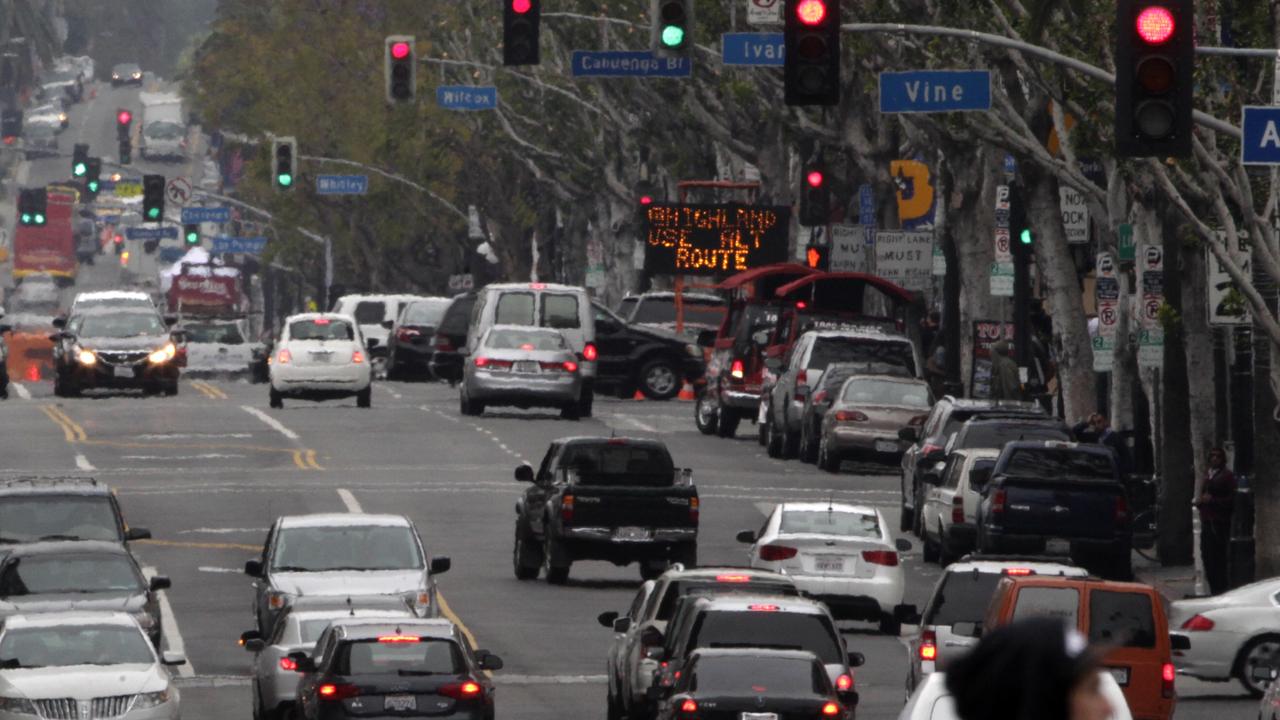WHAT WAS CLAIMED
The California wildfires released more CO2 in two days than every American car in decades.
OUR VERDICT
False. American cars contribute far more to global emissions in just one year.
AAP FACTCHECK - California's recent devastating wildfires have sparked false claims that in two days they emitted more carbon dioxide than every American car in decades.
However, US cars contribute far more in emissions in just one year.
The claims were shared online shortly after the fires started in January. They burned more than 50,000 acres and left 29 people dead.
"Newsom's California fires have emitted more CO2 in 2 days then every car in America has in 2 decades," one post reads, referring to California's Governor Gavin Newsom who it went on to attack.

However, annual carbon emissions from vehicles and US agriculture are far higher than wildfire emissions, and the California wildfires, while catastrophic, pale in the size of emissions to some recent fire events in Australia and elsewhere.
Dr Maximilien Desservettaz is an atmospheric chemist at the University of Wollongong and co-chair of the International Global Atmospheric Chemistry (IGAC) Project whose work has a focus on the emissions impact of wildfires.
He told AAP FactCheck the claims were "very much exaggerated."
In a report for 2023, the Copernicus Atmosphere Monitoring Service said the 20-year average of wildfire carbon in the United States was approximately 60 megatonnes (Mt) of emissions.
"Wildfire emissions in the continental USA in 2023 were at their lowest for the past two decades at 26 megatonnes of carbon," it added.
By comparison, the US vehicle industry accounted for about 1489 Mt of CO2 emissions in 2023, according to the US Energy Information Administration, while the US agriculture industry in 2022 accounted for about 664 Mt of carbon dioxide equivalent including methane, the US Department of Agriculture reported.
In a statement to USA Today also debunking these claims, Copernicus researchers said that as of January 26 the 2025 Los Angeles fires emitted about 4.4 Mt of CO2 equivalent, a far cry from the recent US vehicle and agriculture figures above.

"Furthermore, forests regrow (unlike fossil fuel deposit)," Dr Desservettaz added. "Therefore, forest fires are near carbon neutral, as the CO2 is eventually reabsorbed as regrowth takes place."
However, if fires are too intense vegetation may be unable to recover, which can be a problem in a place like Australia where eucalypts often rely on fire for seeding.
Recent fires in Australia have created far larger CO2 emissions than the estimated 4.4 Mt so far of the California fires.
In Australia, the 2019-2020 Black Summer wildfires were far larger, creating an estimated 715 Mt of CO2 - which a study found was more than one and a half times the human-created emissions in Australia for 2019.
Elsewhere, the 2023 forest fires in Canada released about 640 Mt of emissions, NASA scientists reported.
AAP FactCheck is an accredited member of the International Fact-Checking Network. To keep up with our latest fact checks, follow us on Facebook, Twitter and Instagram.












